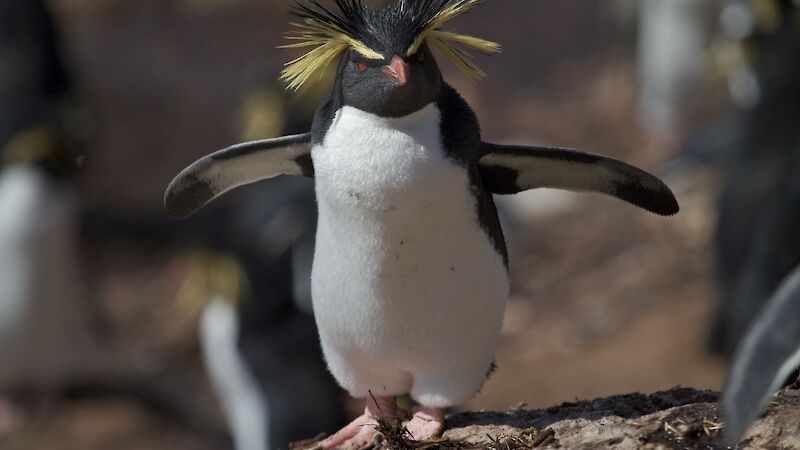Scientific name: Eudyptes moseleyi
Physical description and related species
There are currently 2 recognised species: the northern rockhopper (E. moseleyi) and the southern rockhopper (E. chrysocome). The 2 species are genetically different and also exhibit differences in their vocalisations (‘songs’) and morphology (appearance).
Northern rockhopper penguins weigh about 3 kg at the beginning of the breeding season. Pre-moult, the penguins average 4.3 kg. However, during the moult they lose a lot of body mass and often only weigh about 2.5 kg by the end of the season.
Distribution and abundance
Northern rockhopper penguins breed on seven islands or island groups in the temperate Indian and South Atlantic oceans located between 37 to 40°S.
Conservation status: endangered
Since populations are located on remote islands, trends have not yet been well researched. However, recent estimates indicate that there may be about 240,000 breeding pairs most of which occupy the islands of Tristan da Cunha and Gough Island. Over the past four decades, they have decreased by nearly 60%. Active conservation measures are being undertaken to stop further population losses but the causes of the decrease are poorly understood.
Breeding
Northern rockhoppers return to their breeding colonies in late July/early August. Some colonies are about 170 m above sea level. As all crested penguins, they lay two eggs of different sizes. The second egg is larger than the first and tends to hatch before the first egg. The eggs are incubated for 32 to 34 days with both parents taking turns. The first egg is often lost just a few days after incubation commences.
Once the chick hatches, the male looks after it for another 20 to 26 days while the female forages for food. About 10 weeks after the chick hatched, it has moulted and is ready to go to sea. Once the breeding activity is over, the adults prepare for their annual moult for about a month during which they replenish their body reserves. In February, the adults return to their islands to moult.
Diet and feeding
Not much is known about the diet of northern rockhopper penguins. At least in some locations, crustaceans (such as krill) can make up 90% of their food intake. The diet composition appears to change with season and cephalopods (squid) are an important prey item during the early stage of chick rearing.

